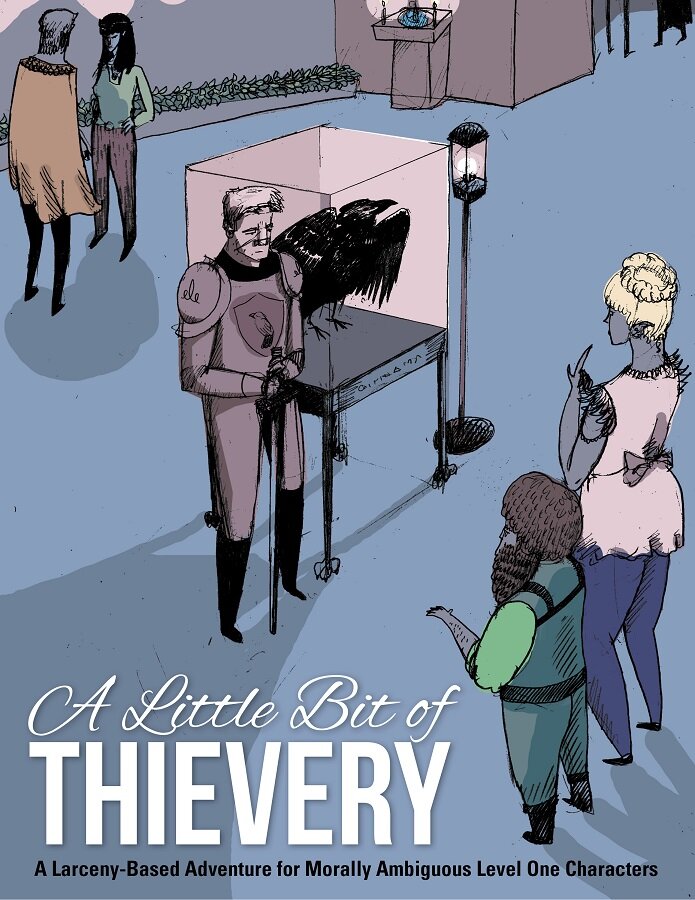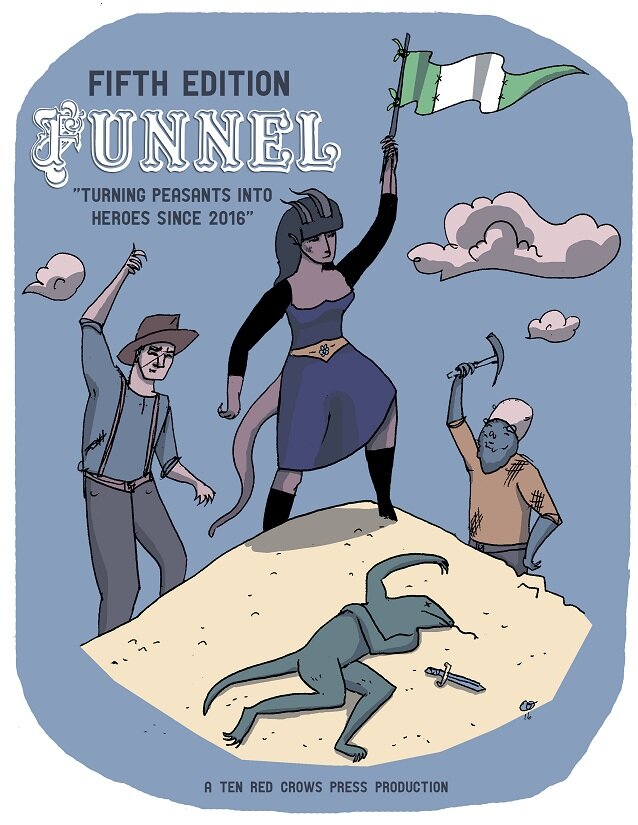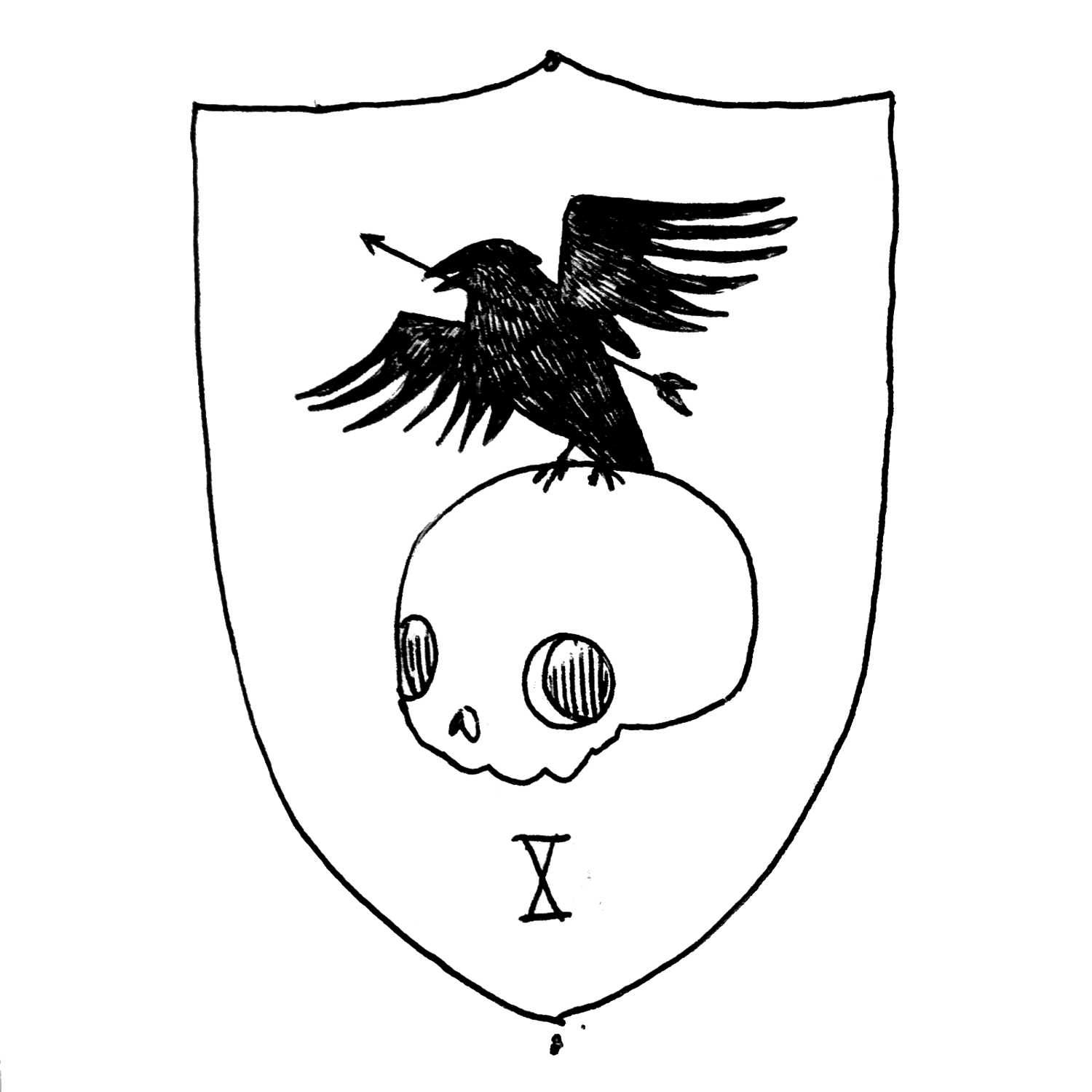Let's talk about Treasure in 5e
The question: “How much treasure to give your players?” is ridiculously difficult. Ink has been spilled, keys have been typed, and dozens of dungeons masters have wrung their hands over this problem. In short, characters seem to get a lot of gold, get it faster than they should, have nothing to spend it on, and we don’t know how much we should change it (Editor’s Note: the player editor would like to point out that I have literally never felt this way in any of the campaigns DM’d by the author).
The problem breaks down to the following issues:
Characters don’t have anything to buy
Well balanced parties can defeat higher CR creatures, earning money faster than anticipated
The cash players earn (particularly at higher levels) appears obscene.
There is no guidance on the consequences of changing treasure rewards.
Let’s break these problems down one by one.
The characters don’t have anything to buy
In some older editions and Pathfinder, the primary way to burn through cash is to buy magic items. However, the advice provided in the 5e Dungeon Master’s Guide (DMG) simply states that “most magic items are so rare that they aren’t available for purchase.” Thus, once the party accumulates enough coin to buy plate mail for the plucky fighter (probably around level 4) then there isn’t much gear left to purchase. If our heroes wanted to buy a nice ship or build a castle, they likely could accumulate that much cash by level 9. However, after that, the treasure the party finds doesn’t necessarily purchase anything new. The party has become the 1%, constantly upgrading their mansions and hoarding unspendable amounts of wealth.
The easiest way to solve this problem is to have some market for magical items. Single-use items are a great way to drain the party’s bank account, give them an edge in combat, and still keep them from becoming overpowered. The players also get to feel clever when they buy the right item for the right encounter. It is also a chance to develop fun NPCs as your charming local chemist, alchemist, or priest can sell potions, grenades, or spell scrolls to a party in need.
You could also create a small market for permanent magical items. This easily soaks up the cash that characters earn throughout a campaign until they are level 15 or so. Xanathar’s Guide has official rules and prices that work well. Remember, you do not have to have a wide-open magic item market, just the occasional item that the players may want. Plus, these magic markets don’t necessarily have to be 100% reliable. Maybe it takes a week or two and additional costs to find a seller, you can’t always get what you want, or there is always the option of some fraud.
Furthermore, if you are worried about overpowered characters, just keep track of which permanent items characters buy and remove comparable items from your random treasure rolls. Xanathar’s Guide has a chart on page 135 with what a party should earn throughout a campaign, and that allows you to easily track what the characters should have.
Characters punch above level.
Now that we have given our players something to spend their money on, let’s take a look at how characters earn treasure. The DMG awards treasure based on the CR of the monster defeated. This makes sense: the more powerful the monster, the more treasure it has (or the more local townspeople are willing to pay to make it go away).
Ideally, the CR of a monster should be at or below the party level. However, once parties get above 5th level, the DMs often need to use monsters with a CR well over the party level to challenge them. The exponential nature of the treasure tables means that when characters fight creatures above their tier, they can get access to more cash than they “should.”
Luckily, someone has already recalculated what CR of creatures the characters should be facing. You can find quick matchup charts based on those new numbers here. This information allows us to adjust the treasure tables to increase the difficulty of getting that sweet sweet loot.
The first tier doesn’t change much, but the remaining tiers are easily 5 or 6 levels in CR above standard. This should keep our characters from getting too much undue cash.
The characters earn a lot of money at higher levels
Now that we have rebalanced the CR of the treasure tables, let’s take a look at how much the characters earn. Under the standard DMG rules, a party of 4 will earn well over 3.2 million gold pieces by the time they are deep in level 20. That’s 17 legendary magic items, with some change left over, if you are keeping track. However, 80% of the cash will be earned in the final tier of play, or in other words, not until they reach levels 17-20.
The easiest way to control this is to reduce the amount of cash the party receives on a particular level tier. I have created two variants. The low cash variant reduces the gold received in the second and third tiers by 50% and the fourth tier by 90%. The silver standard reduces all treasure by 90% (silver pieces instead of gold) and will leave your characters broke.
I like assigning treasure on a per-encounter basis; this chart easily shows the differences between the methods. To use the chart below, find the highest CR creature in each encounter, then add the gp indicated per encounter and then multiply that total by the number of players.
So, if you have a session with four players and two encounters, you would first find the highest CR creature for each encounter, say a CR5 and CR6, making the calculation look like this:
DMG: (17+222)*4
Low Cash: (17+111)*4
Silver Std.: (2+22)*4
(The player editor would like to point out that the Silver Standard seems cruel and unusual).
Here is another example: Tasha is planning 3 combats next session, one with orcs (CR 1), one with goblins (CR ¼), and a final battle with a fire giant (CR 9). There are 3 characters in this party and Tasha is using the DMG standard levels of treasure. The total treasure available to distribute is 786gp ((17+17+222) x 3). She can divide the total up, keep it as a hoard for the fire giant, or carry it over for distribution next session.
This table assumes that 3rd and 4th tier characters fight creatures with higher CRs than the party level and will gain experience faster. Loot sizes have been adjusted accordingly.
Yeah, ok, but how does it all stack up?
Now we have rebuilt the treasure tables, let’s analyze them. It’s all well and good to make a chart, but we need to know how the planned changes impact the campaign. Unfortunately, there are no analysis or alternate systems provided in the DMG, they just throw up their hands and toss it into the realm of the DM. But, nonetheless, there is a way to compare treasure systems - we start by considering the purchasing power of a party of 4 characters over the campaign. The chart below shows the approximate level at which a party could afford a particular item (assuming diligent saving Player Editor’s Note: AKA, not buying those sweet bombs from the alchemist). In reality, these levels will be higher as players will be purchasing mundane items and health potions along the way. However, you can use this chart to plan your campaign. For example, if you plan to end the campaign at level 11, and you want your players to be able to afford a castle, you’ll have to stick with the standard treasure tables in the DMG.
Honestly, the chart tells us that the cash the DMG gives out is… basically… fine? For all the ink that is spilled about the absurdity of the DMG treasure tables, it doesn’t get really weird until the 4th tier. Besides, we know most campaigns end around the third tier of play, somewhere between levels 10-15. This is where the party can afford a castle and a legendary item. Which, at the very least, seems reasonable. The only problem with the DMG standard is that the party would likely be able to afford a Very Rare item before its “level-appropriate” (see the Magic Item Rarity chart on page 135 of your DMG).
The low cash option serves to smooth out the higher tiers of treasure. It pushes back the affordability of some items, but the party still might be able to purchase a Very Rare item a level before its “appropriate.” If your campaign ends between levels 10-15, then a Very Rare item is the largest purchase they will be able to make.
The silver standard dramatically reduces the amount of cash given (1/10 as prescribed in the DMG). In lower levels, the heroes are barely scraping by, especially if you are using the gritty realism rest variant in the DMG (see p 267 for more information). This could narratively make sense in your world - the crappy pay reinforces why people choose to be farmers as opposed to adventurers. Fighters will probably wind up stripping plate mail off of a dead enemy before they can purchase it at level 6. If the party saves and scrapes all their money together, they may be able to buy a legendary item before level 20. Maybe. Have fun with your Rare magic items.
The silver standard also has the advantage of high compatibility with adventures that use the DMG for treasure. Just replace each gold piece with a silver coin.
The end?
There you go. We have adjusted the difficulty of our treasure tables, gave our intrepid characters something to buy, developed alternate treasure schemes, and figured out a way to evaluate them. I hope this provides you with ideas on how to adjust treasure in your campaign. You can download a summary here.
Have you messed with the treasure tables in the DMG? Comment below and let me know how it went.









